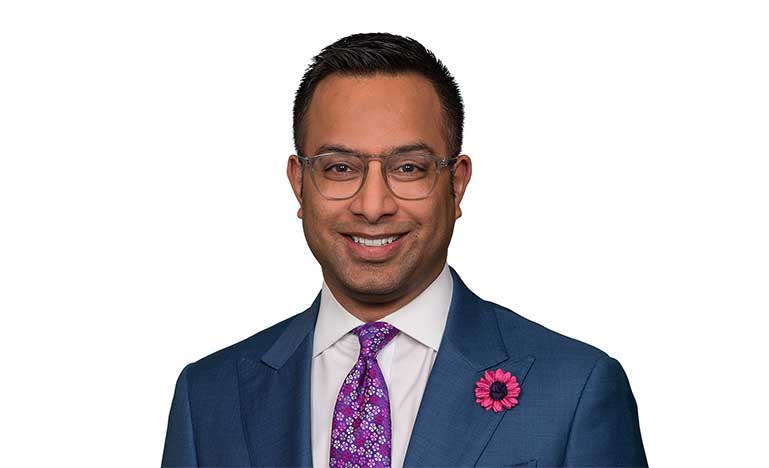How to counter bias in the legal workplace
Diversify the hiring and mentoring process.

When most people think of who works at big Canadian law firms, silver-haired white men over 55 clad in blue pin-striped suits come to mind. A quick scan of firm websites will confirm that's not far off the mark.
"It's a real issue," says Sheel Chaudhuri, an associate at Clyde & Co., who serves on the Bar of Montreal's ethnocultural diversity advisory committee. He is also his firm's representative with the Quebec bar's Panorama Project, which aims to promote diversity through recruitment and retention.
"Law lags behind comparable professions like medicine and engineering in reflecting Canadian diversity," he says. "Ethnic, cultural, racial and sexual — it's just not there yet, and it's something leadership needs to take more interest in."
Morally, the profession has an obligation to get there, as lawyers have disproportionate access to power and defend the rule of law in society.
"When you have that sort of responsibility, there needs to be special attention to be as inclusive as possible to the changing needs of the population," says Chaudhuri.
If the moral argument for diversity doesn't resonate, the economic one should. Clients are increasingly demanding it because their customers and their workforce look a lot more like the rest of society than the law firms they hire, says Ranjan Agarwal, a partner at Bennett Jones in Toronto.
"If we don't keep up with the changes that are happening in society around us, then we risk losing clients as a result," he says. "It's important to our business. Diverse teams lead to more creative problem-solving. There's lots of research that shows diverse teams are better for the bottom line."
Many firms have diversity policies and talk the talk. But to move beyond the rhetoric, the most practical thing to do is diversify the hiring process, says Chaudhuri, who is actively involved in Clyde & Co's recruitment.
"There is no substitute for having someone on the other side of the table, looking at the resume, who has also been in the shoes of that person from whatever community is underrepresented. They will understand 100-fold more where you're coming from, what your background is, how you see the world."
That will eventually trickle into the mentorship these lawyers will oversee, which matters a great deal, given how many people from different backgrounds leave big firms after four or five years. Given the narrow culture they're often expected to fit into, they can be left feeling isolated and alone. Having mentors and identifying people who have walked in their shoes can go a long way to offset that.
That's why Agarwal joined the South Asian Bar Association when he made partner in 2015. At the time, there were very few South Asian partners at big Bay Street firms. He went on to serve as president. Earlier this year, he was elected to the Ontario Bar Association's board as second vice president, which means he will lead the organization come 2022 — the first South Asian to do so.
"It's important for younger, South Asian lawyers to see that because I believe in role modelling. If you can see someone in a role you aspire to, then it's achievable."
Agarwal says it's also crucial for the broader legal community to see diversity in leadership roles, as it "normalizes our place the profession."
"It wasn't that long ago that I'd walk a courtroom and I'd be the only minority lawyer there. The only other minority there would be the court clerk."
Part of the push towards change has to include education so people can understand that, by virtue of their upbringing, class, skin colour and gender, they enjoy a certain privilege, Agarwal says. Firm leadership must be fully committed to diversity and inclusion at every level — not merely make it a recruitment issue or a business issue focussed on appeasing only the clients calling for it.
Change also requires transparency and a safe space for lawyers of diverse backgrounds to talk about the challenges they're facing.
"I think right now there is a fear that exists that if you rise up and say you've been the victim of unconscious bias or micro-aggressions or outright racism, your opportunity for advancement, to work on good files or to work with the mentors you want to work with, those will dry up," Agarwal says.
Firms need to audit how work is assigned, how people get on client teams and who is doing the administrative work in an office — as he says those too can be tinged with bias.
"If the top dog in the firm is always mentoring someone who looks like them, it means that when they become a mid-level partner, they're also mentoring someone who looks like them, so you can see how the flow of work can bypass qualified, disadvantaged groups."
Agarwal admits he was initially blind to the fact South Asians were struggling in the profession. As someone who doesn't wear a turban or beard, he hadn't. But looking back, there were still micro-aggressions — people refusing to pronounce his name correctly, being confused for other South Asian lawyers and being called a "real good Canadian" by a client because he made a hockey reference.
"That rolls off my back relatively easy," he says. "But as I think about the totality of it as I get more steeped in discrimination and inclusion research, I realize that those kinds of things can cause a deep-seated trauma in some people. It can lead them to shy away from opportunities that can lead to their professional success because they don't want to be exposed to that kind of conduct."
As someone born, raised and educated here, and who has no accent or obvious signs of religion, Agarwal knows he enjoyed a certain privilege.
"Now shift that just one degree and put a turban on me, or have me born in India... If you move the dial just a little bit, all of a sudden, it's a world of difference between that guy and me. What he has to go through on a daily basis, I can only empathize."
He says as diversity takes hold into leadership roles, people will be braver about speaking out -- and they'll have more allies who can speak on their behalf. Holding up a mirror in that safer space will also help foster change.
"I think a lot of people in workspaces would be surprised to learn that this is what's happening in their workplace — and the effect it has."


